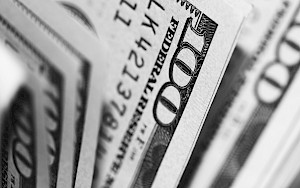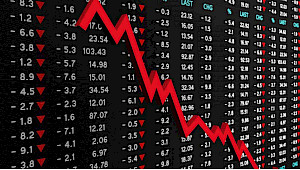Why the U.S. dollar will be replaced as the dominant global currency — sooner than you think
July 13, 2022Originally published in The Toronto Star on Junly 15, 2022 as contributing columnist
Not long after the first gunfire erupted at the onset of Russia’s invasion of Ukraine, Russia fired another multi-pronged shot, straight across NATO’s financial bow.
First, and as a reaction to the crippling sanctions and its exclusion from the global SWIFT money transfer system imposed by the West, it moved quickly to protect the ruble by raising interest rates to 20 per cent (subsequently lowered to 11 per cent) and imposing capital controls. Then it demanded that all “non-friendlies” (the West) could only use rubles or gold to buy its much-coveted oil. Russia, which has spent the better part of the last decade getting rid of its U.S. dollars and increasing its gold reserves, also offered to buy gold (mostly from its captive gold-mining sector) at the rate of 5,000 rubles per gram. Russian President Vladimir Putin is advocating that BRICS economies look into creating an international reserve currency using the basket of their own currencies. Finally, he started making noises about creating a gold-backed ruble. Why is there any significance to these moves?
The writing is on the wall that some form of change is imminent, and a global monetary system reset may already be underway. According to Credit Suisse, this new economic order will revolve around commodity-based currencies. These commodity-based currencies will further weaken the Eurodollar system, which will be much weaker after the war between Russia and Ukraine ends.
How all these things evolve, and their timing, are beyond anyone’s forecasting abilities, but something will eventually replace the U.S. dollar as the sole dominant global reserve currency, perhaps sooner than anyone expects.
I expect, at the very least, an “alternative trading” currency to emerge and compete with the dollar. This new currency would be used solely for settling trades between nations as opposed to a reserve currency that central banks normally use for diversification. Admittedly, this is sheer speculation and the eventual outcome is anyone’s guess.
If you find my prediction shocking, consider the facts. For 400 years, global reserve currencies have come and gone. The reserve currencies of Spain, the Netherlands, and Britain (to name a few) typically have a lifespan of, give or take, 100 years. The reasons for the demise of reserve currencies are repeated over and over. For a great read on this topic, pick up a copy of Ray Dalio’s “Principles for Dealing with the Changing World Order” or if you are rushed for time, search for his YouTube video, which explains it in very simple terms. Tragically, when global powers lose their dominant reserve status, bloody wars usually follow.
The U.S. dollar attained its dominant reserve status in 1944 with the Bretton Woods agreement. The basics of the agreement between 44 countries was that the dollar would be pegged to gold and all other countries’ currencies would be pegged to the dollar.
A great idea, as long as the U.S. kept its gold and was fiscally responsible. But by 1971, all fiscal discipline had gone out the window and U.S. President Richard Nixon effectively defaulted when he decoupled the dollar from gold.
This move would have been immediately devastating to the U.S., were it not for the brilliant move to create the “Petrodollar.” The relationship was formed between Saudi Arabia and the U.S., where the former would sell its oil in exchange for the dollars earned being reinvested into the U.S. Treasury market along with security promises. To put it simply, the demand for dollars to trade in what is the biggest commodity in the world has served to prop up the dollar despite all the fiscal and monetary abuse that has been heaped upon it.
The world has changed a lot since 1971. China’s emergence as a global economic power rivalling the U.S. (and the rise of BRIC countries in general), America’s profligacy, its fiscal and monetary irresponsibility (especially after the 2008 crisis), the fact at that central banks’ credibility has been laid to waste and now the end of the globalization experiment, to name a few. Global trade relationships are evolving as well. (Trade between the Russian Federation and the BRICS countries increased by 38 per cent to reach $45 billion in the first three months of 2022.)
Couple those changes with the frequent weaponization of the U.S. dollar through sanctions and the SWIFT system, and you can see why certain countries have been desperately looking for U.S. dollar alternatives. In short, the U.S. dollar feels like a lame-duck currency. It still rules, but the world is clearly jockeying for what comes next. Other reserve currencies like the yen and euro have been abused as badly or worse than the dollar, so they don’t offer much of an alternative.
No country is more anxious about these changes than China, especially after the start of the war in Ukraine. A financial-economic war was already simmering between the U.S. and China prior to Russia’s invasion, and China has called for a “new international financial order” in the past. But with the Ukraine war, things may be really heating up. Chinese President Xi Jinping has been criticizing the use of sanctions, especially with respect to weaponizing the dollar and warning of its consequences to the west. As for what would constitute a replacement of the dollar as the supreme reserve currency? We know the Chinese yuan is not capable of replacing it on its own, no matter how much China has tried to change things. It only represents two per cent of global foreign exchange reserves. But it might have alternative routes, and one of them could be a partially gold-backed “settlement” currency.
China has been quietly building its gold reserves. It’s the world’s largest gold producer (12 per cent of global production) and the world’s largest gold importer. No Chinese-mined gold is allowed to be exported. Incidentally, the government also encourages its citizens to buy gold. Domestic and imported gold just disappears into a big black hole. China is careful in its gold accumulation and doesn’t show its hand, presumably because it doesn’t want the gold price to spike. Its domestic production alone accounts for 7,000 tons over the past 20 years. (America’s official gold reserves stand at 8,200 tons.) China has a habit of not reporting its official gold reserves for many consecutive years and then publishing numbers that are exponentially higher than previous reports. They last reported in 2019 at 1,950 tons. No one believes this is accurate. It could easily be double or even higher.
How would a gold-backed settlement currency work? As economist Jim Rickards explained it to me recently, a currency doesn’t have to be fully backed by gold. When the British pound was backed by gold a century ago, its M0 money supply (the currency in circulation and money being kept in banks in reserves) was backed to the tune of only 20 per cent gold. And although the U.S. always kept its gold backing of the dollar at 1:1 during the 1930s, it legally had the ability to go down to a 40 per cent coverage. With China’s M0 money supply around $1.4 trillion (9 trillion yuan), and assuming a 40 per cent gold backing, it would indicate a need for $560 billion worth of gold which is approximately the same amount of gold the U.S. holds in its official reserves at 8,200 tons.
To have a gold-backed currency trading system, you only need two countries using the system initially. Given China’s tacit support for Russia over Ukraine, its need for Russian oil and other commodities, it is not inconceivable that it might have found its dance partner. The two countries could create a settlement trading currency (different than a reserve currency) outside the U.S. dollar system. They could agree to trade on a “net settlement“ basis, meaning they would settle their trade on a periodic basis, say every quarter. Recently, an analyst from Russian bank VEB.RF suggested that Russia should create a gold-backed stablecoin under the working title “golden ruble.” According to their research, Western countries will have no opportunity to block settlement operations carried out in such a currency, since its exchange rate would be pegged to the gold rate on the world market, not to the dollar, the euro or, for that matter, the fiat ruble itself.
This approach would require a lot less gold. And of course, the currencies could be backed by a basket of commodities — it doesn’t have to be gold. It’s just that gold is the only metal held almost universally by central banks. It must be something tangible, which is why I don’t include bitcoin, which China has already banned and didn’t provide Russia any tangible escape route to avoid sanctions.
If this were to occur, what would the rest of the world do? I should first note that governments representing more than 80 per cent of the world’s population decided to sit on the fence rather than condemn Russia for its unprovoked war. Economic behemoths such as India and Brazil and much of the Global South are not taking sides, many wanting to maintain good trading relations with Russia. One could easily imagine a bifurcated global monetary system where non-aligned countries could trade within both the U.S. dollar system and a China-Russia gold-backed system.
While Americans have been binging on digital currencies, global central banks have been on a gold-buying spree. They started in 2010 and they are still buying while at the same time reducing their U.S. dollar reserves, which are now down to 59 per cent of total reserves from 71 per cent in 2000. Physical gold is moving from west to east. At the same time, there are signs the Petrodollar system is cracking. Saudi Arabia is making noises about selling oil to China in yuan and is squarely siding with Russia over OPEC oil supplies, despite pleading from the Biden administration to increase production.
Most economists will argue that the “stickiness” of the U.S. dollar in our global system will prevent its fall from grace. I have found that most economists are wrong about pretty much everything. One must wonder how the U.S. would react to the potential outcome I outline. My guess is it would try to resist and discredit it at first.
In the end, market forces might dramatically reduce the number of U.S. dollars needed and its value would decline accordingly. Of course, the U.S. could go back to some type of gold standard, but even at a 20 per cent gold backing of its M0 money supply, gold would have to be revalued to $7,500 an ounce.
That might sound outlandish but recall that in 1933 the U.S. mandated citizens to sell their gold to government at $20.67 an ounce only to turn around and immediately revalue gold at $35. They robbed their citizens to effectively devalue the dollar by 70 per cent.
That kind of move would be a difficult pill to swallow for Americans, and for politicians, given a gold standard would impose a discipline they haven’t been accustomed to over the past 50 years and it would also mean accepting a lower standard of living for a while.
That said, it may have its hand forced if a large part of the world population goes in the direction of a gold-backed currency. Whatever happens, let’s hope it’s a peaceful transition. Because that would be a hell of a lot more appealing than the violent transitions we have witnessed throughout the centuries.










